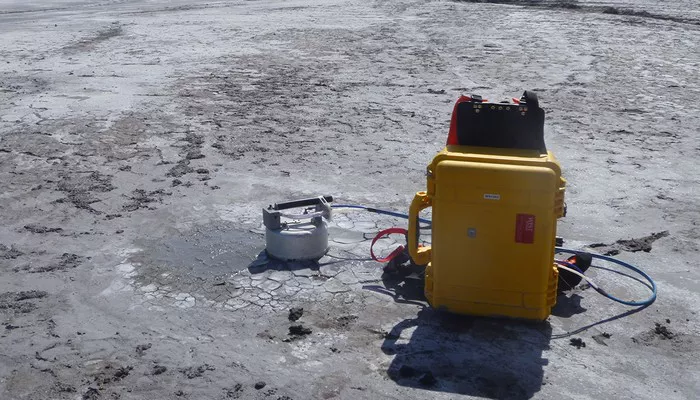Flow measurement is a fundamental aspect of fluid mechanics and industrial processes, ensuring the accurate monitoring and control of liquid flow in various applications. Among the many types of flow meters available, the paddle wheel flow meter is a popular choice due to its simplicity, cost-effectiveness, and versatility. This article provides an in-depth look at the working principles, applications, advantages, and limitations of paddle wheel flow meters.
What is a Paddle Wheel Flow Meter?
A paddle wheel flow meter is a type of mechanical flow meter that measures the flow rate of a fluid by utilizing a rotating paddle wheel. The wheel is placed in the path of the flowing liquid, and as the fluid moves, it causes the paddle wheel to rotate. The rotational speed of the wheel is directly proportional to the velocity of the fluid, allowing for precise flow measurement.
Working Principle of a Paddle Wheel Flow Meter
The operating principle of a paddle wheel flow meter is based on the interaction between the flowing fluid and the paddle wheel blades. The main components of the meter include:
- Paddle Wheel: A rotor equipped with blades or paddles.
- Flow Body: The section of the pipeline where the paddle wheel is installed.
- Sensor: Typically a magnetic or optical sensor that detects the rotation of the paddle wheel.
- Transmitter: Converts sensor signals into flow rate readings.
As the fluid flows through the meter, it imparts kinetic energy to the paddle wheel, causing it to spin. Sensors placed near the wheel detect the passing of each blade and generate pulses. The frequency of these pulses corresponds to the fluid velocity, which can then be converted into a volumetric flow rate using calibration data.
Types of Paddle Wheel Flow Meters
Paddle wheel flow meters come in various configurations depending on the application and installation requirements. The common types include:
Insertion Paddle Wheel Flow Meter:
- The paddle wheel is inserted into the flow stream using a probe.
- Ideal for large pipe diameters and minimal pressure drop.
Inline Paddle Wheel Flow Meter:
- The entire meter body is integrated into the pipeline.
- Provides higher accuracy and is suitable for smaller pipe diameters.
Battery-Powered Paddle Wheel Flow Meter:
- Operates without an external power supply.
- Used in remote locations and portable flow monitoring.
Applications of Paddle Wheel Flow Meters
Paddle wheel flow meters are widely used across various industries due to their reliability and ease of installation. Some common applications include:
Water Treatment Plants:
- Monitoring the flow of clean and wastewater.
- Ensuring proper chemical dosing.
HVAC Systems:
Measuring coolant and water flow in heating and cooling systems.
Chemical Processing:
- Used in industrial plants to control the flow of liquid chemicals.
- Compatible with non-corrosive and moderately aggressive fluids.
Irrigation Systems:
Monitoring water distribution in agricultural applications.
Food and Beverage Industry:
Measuring the flow of beverages, syrups, and other liquid ingredients.
Pharmaceutical and Biotechnology:
Ensuring accurate fluid handling in medical and laboratory processes.
Advantages of Paddle Wheel Flow Meters
Paddle wheel flow meters offer several benefits, making them a preferred choice for various fluid flow measurement needs:
Cost-Effective: More affordable compared to other flow measurement technologies such as Coriolis or ultrasonic meters.
High Accuracy: Provides precise readings when properly calibrated and installed.
Low Pressure Drop: Minimal impact on the flow characteristics of the fluid.
Ease of Installation: Simple to install in both new and existing pipelines.
Wide Range of Applications: Can be used for measuring various liquid types, including water, chemicals, and oils.
Minimal Maintenance: Few moving parts reduce the need for frequent maintenance.
Limitations of Paddle Wheel Flow Meters
Despite their numerous advantages, paddle wheel flow meters have some limitations that must be considered:
Not Suitable for Gas Flow Measurement: These meters are designed exclusively for liquid flow.
Sensitivity to Fluid Properties: Changes in viscosity, temperature, and density can affect accuracy.
Requires a Minimum Flow Rate: A certain flow velocity is necessary to rotate the paddle wheel effectively.
Limited to Clean Fluids: Suspended solids or highly viscous fluids can cause clogging or inaccurate readings.
Installation and Maintenance Tips
To ensure optimal performance of a paddle wheel flow meter, proper installation and maintenance are crucial:
Installation Considerations:
- Install the meter in a section of pipe with stable, fully developed flow (away from bends, valves, and pumps).
- Ensure the paddle wheel is properly aligned with the flow direction.
- Use the correct pipe size to match the meter’s specifications.
Maintenance Tips:
- Regularly clean the paddle wheel to prevent fouling or buildup.
- Inspect the sensor for any signs of damage or wear.
- Verify calibration periodically to maintain accuracy.
Conclusion
Paddle wheel flow meters are an effective solution for measuring liquid flow in a wide range of industrial and commercial applications. Their affordability, ease of use, and reliability make them a popular choice for many industries. However, proper selection, installation, and maintenance are essential to ensure accurate and consistent performance. By understanding their working principles, advantages, and limitations, users can make informed decisions about incorporating paddle wheel flow meters into their systems.

